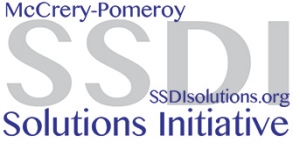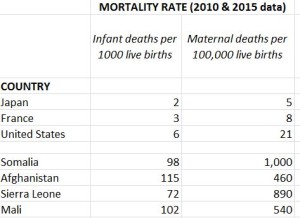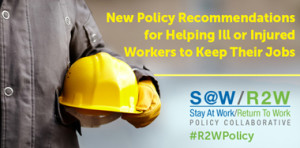March 7, 2016
Manifesto – Preventing Needless Work Disability (DRAFT)
I’ve tried to squeeze all the main ideas of the work disability prevention (WDP) model into one page (see below). The model has matured over the last several years as key dynamics have become more apparent. I’m curious to hear your reaction to this new version.
After promoting the WDP model in the private sector for a long time, I started introducing it to the Federal / State disability sector in 2011. Now seems like the right time to get a compelling and very succinct document circulating so it gets in front of many more eyes – for example, lots of eyes on Capitol Hill and in regulation-creating / law-making (sausage making) circles.
The members of the Work Fitness & Disability Roundtable are also helping me craft a 3 or 4 bullet “sound bite.” However, in my view it will take more than that to get influencers and decision-makers to decide to explore these issues further. They need a quick summary of WHAT the problem is, WHY things look the way they do, and WHAT might be possible instead — but just a bit. Thus, this one-pager.
I’m not yet clear what to do with this draft – other than to post it here and solicit your comments. Am also hoping to get your ideas for the best organization to issue and disseminate a manifesto like this — so it has the maximum impact. What are the chances of it going viral? Please leave a comment below or email me your ideas and suggested revisions.
Work Disability Prevention Manifesto (DRAFT)
- Preserving people’s ability to function and participate fully in everyday human affairs, including work, is a valuable health care outcome, second only to avoiding loss of life, limb, and essential bodily functions.
- Loss of livelihood due to medical problems is a poor health outcome because worklessness is harmful to people’s health as well as their personal, family, social, and economic well-being.
- A new medical problem that threatens the ability to continue earning a living is a big challenge – a life crisis that must be addressed. Most people are unprepared, never having faced this double-headed predicament before. It can overwhelm their coping abilities.
- When medical conditions occur or worsen, especially common health problems, most people are able to stay at or return to work without difficulty because the right things tend to happen during the first few days or weeks.
- However, many of the prolonged work disability cases in both private and public sector sickness programs, disability benefits, and workers’ compensation programs began as very common health problems (for example musculo-skeletal pain, depression, and anxiety) but had unusually poor outcomes.
- Unusually poor outcomes are frequently due to the interplay of sub-optimal health care and non-medical factors. Without a team focused on helping them get their lives back on track, people can get lost in the healthcare and benefits systems. Remediable issues in the situation are overlooked and not addressed. Incentive alignment among the involved parties is poor.
- Medical conditions by themselves rarely require prolonged work absence, but it can look that way. And with every passing day away from work, the odds are worsening that people will ever return to work. After a while, they start to see themselves as too disabled to work.
- Unlucky people lose their job and do not find a new one. They leave the workforce and eke by on disability benefits, in poverty, and vulnerable to its detrimental effects.
- Today, most professionals typically involved in these situations (healthcare professionals, employers, and benefits handlers) do not feel responsible for avoiding job loss.
- Good scientific evidence exists about how unusually poor outcomes are created, how to avoid them, and the health care and other services that can optimize function and protect jobs.
- When work disruption begins, it is both effective and cost-beneficial to have a coordinator assist the individual, their treating physician, and their employer with communications, as well as focus everyone’s attention on restoring function, accommodating irrevocable losses, and making plans for how to keep working, return to work, or quickly find a more appropriate job.
- Urgent priority should be given to establishing accountability for work disability and job loss as well as building nationwide capacity to consistently deliver services that help people stay at work or return to work – just in time, when needed.
- Helping more people with medical problems to keep their jobs or find new ones in a timely manner will benefit them and their families, and will benefit our society as a whole.
March 7, 2016



